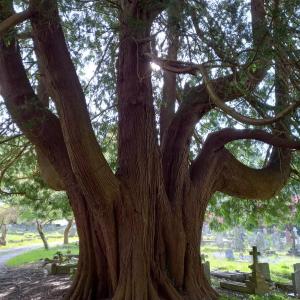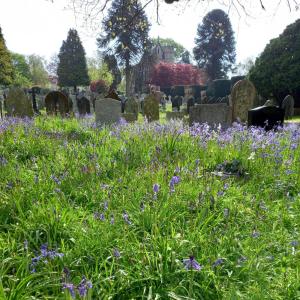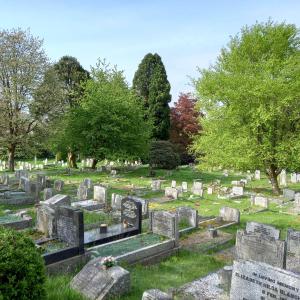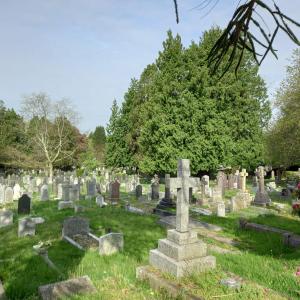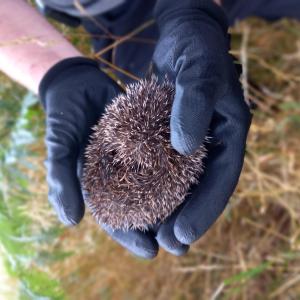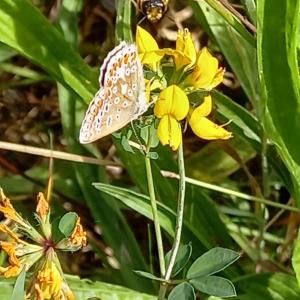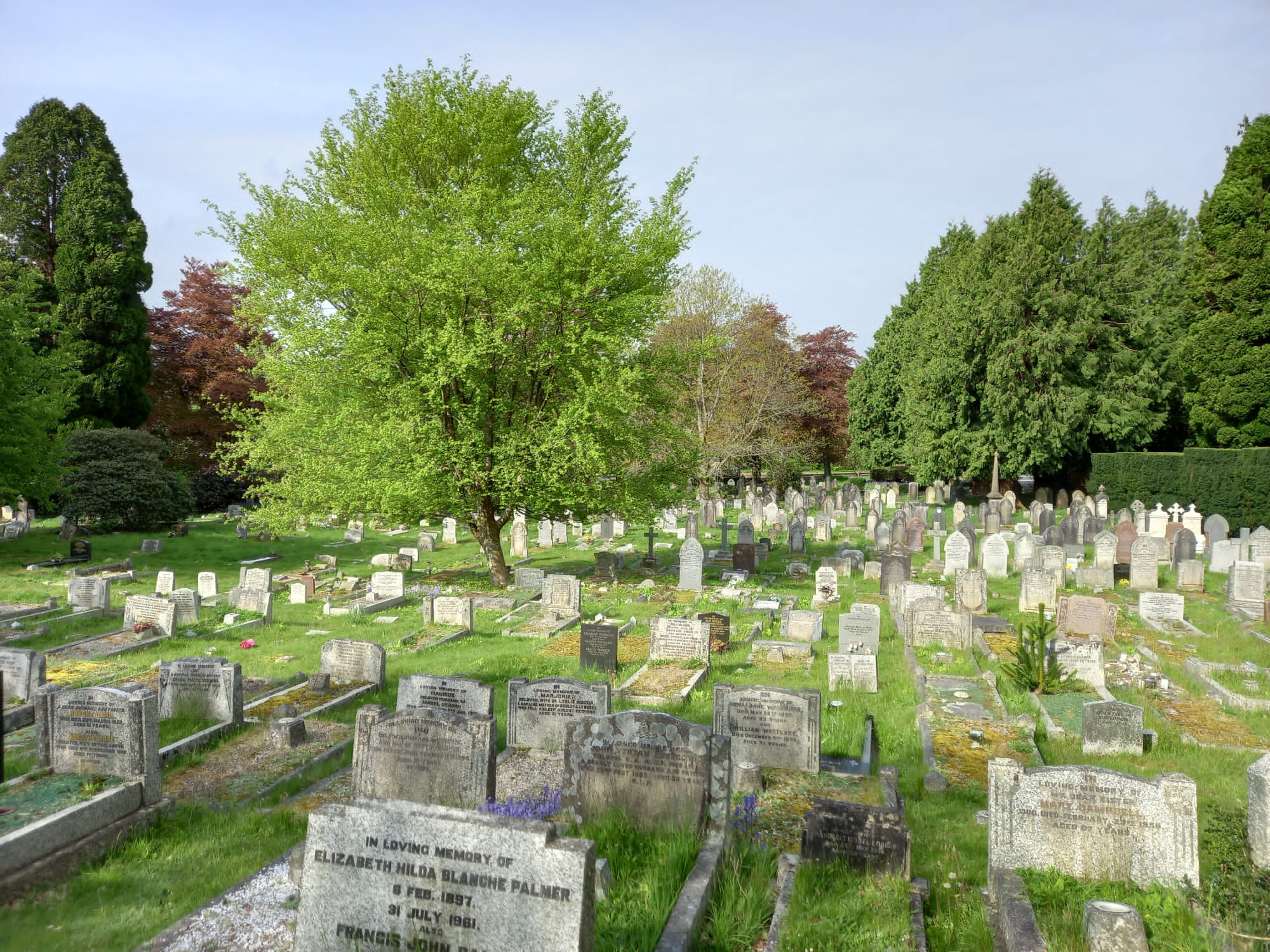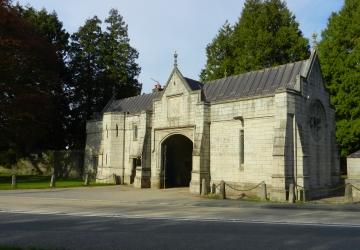
History
The establishment of cemeteries to house the buried of the growing populations from the mid 1800s has resulted in a rich historical, cultural, and environmental legacy. Most cemeteries, like Tavistock’s Plymouth Road Cemetery, were usually developed upon existing countryside, away from urban centres, and landscaped and managed in a highly formal fashion, resulting in the widescale planting of trees and shrubs, and the establishment of lawns to create a place of beauty in keeping with the aesthetics of the time. Most of the older cemeteries have now become enveloped within the urban and suburban fabric, and through changes in both management and attitudes, a large number fulfil a range of important environmental functions.
Tavistock Town Council has two cemeteries it manages. Dolvin Road Cemetery is a closed cemetery dating from 1834, Plymouth Road Cemetery was opened in 1884 on land donated by the Duke of Bedford and a modern extension was gifted in 1946 by Mr Langsford. The older parts of the Plymouth Road Cemetery are characterised by mature trees and Victorian monuments, whilst the newer part of the cemetery is laid out in a lawn style. The frontage buildings and the Cemetery chapel were all designed by local architect Henry Clutton in 1881, and together they form a particularly fine example of a Victorian cemetery.
As well as providing us with a rich historical and cultural resource, the establishment of cemeteries has left us with an important environmental legacy.
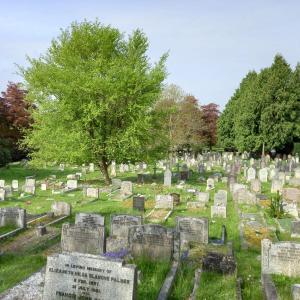
Significance of Cemeteries for Biodiversity
In the past 20 years many cemeteries have become managed for multi-functional purposes, including the maintenance of historical features and biodiversity conservation. The Living Churchyards and Cemeteries campaign, which began in the 1980s, led to the growing awareness of the importance of such spaces for biodiversity, and the establishment of many local initiatives throughout the UK.
Changes have resulted in many cemeteries becoming important wildlife havens and provide a place where people can connect with nature. The range of habitats can be diverse, grasslands, heath, woodland, scrub, hedges, ponds, and more artificial features (such as high maintenance lawns, stands of trees, ornamental flower beds). In addition, buildings, monuments, tombs and headstones, made from a variety of rocks, can provide support for lichens, mosses and ferns, as well as providing geological interest. Insects associated with grasslands, such as many butterflies, grasshoppers and crickets, provide additional interest for visitors, adding a sense of life to cemeteries during summer.
In Tavistock, the Council has implemented measures, as identified in the Blue Campaign, for rewilding to help protect the environment and promote biodiversity. There are now several re-wilding areas on Council owned land including both Dolvin Road and Plymouth Road Cemeteries.
Other areas include;
- a bank in The Meadows near the school;
- Mrs Wedd’s Arboretum near the BMX Track;
- areas along the canal;
- areas around the Skate Park, St John’s Well and St John’s Walk;
- the Plantation near Abbey Bridge;
- areas in the Bannawell Street wetland and park
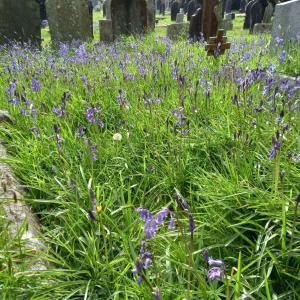
Response to a Changing Climate
Over recent years the Council has made positive changes to its maintenance routine to help promote biodiversity. Shortly mown amenity grass is the most common and dominating vegetation in a cemetery, changes in maintenance can have a big impact. As such, you may have noticed in recent years that grass cutting takes place less frequently at Plymouth Road Cemetery than it used to and areas that contain wildflowers, such as primroses, bluebells and wild garlic are left to self-seed before being cut back.
Benefits:
- Increased habitat potential for invertebrates
- Increased biodiversity
- Longer grass is more resistant to climate extremes (e.g. drought)
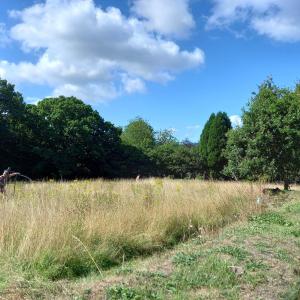
Natural/Green Burials
The Council has been providing a green burial service at our Plymouth Road Cemetery since 1999. The concept of a green burial meadow is to provide a peaceful resting place in a manner which is friendly towards nature, wildlife and the environment.
Our meadow allows for remains to be interred in consecrated land using biodegradable materials such as a cardboard or wicker coffin. The burial is simple with the area being left much as nature intended without headstones or clearly marked out graves. There are two oak trees which have been planted to mark the entrance to the site and a dry stone wall to define the site from the main Cemetery. All graves are marked with a small disk and are individually numbered which allows our Cemetery staff to keep a plan of the area, to enable family and friends to locate where their loved ones are laid to rest.
The Green Burial Meadow at Plymouth Road Cemetery requires no regular maintenance from family and friends to secure an everlasting dignified place of rest as nature takes over. The area is managed as a hay meadow and as such is mown/scythed in high summer. The hay is left to dry in situ to allow the wildlife seeds to fall before being raked up and composted.
Benefits to the environment:
- Reduced chemicals filtering into the natural environment
- Reduced grave subsidence due to absence of coffin
- Reduced mechanical maintenance – lower carbon footprint
- Scything – educational and social value, providing an opportunity for training and workshops
The Friends of the Green Burial Meadow contribute to the management of the site by sowing wildflower seeds and helping with the annual scything and raking. If you would like more information regards joining the Green Burial Meadow volunteering group please contact us via [email protected]
In recent years the Green Burial Meadow has achieved ‘Outstanding’ in the South West in Bloom It’s Your Neighbourhood awards and Tavistock Town Council also came second in the Wildlife Parish and Town Council of the Year category of the Devon Wildlife Community of the Year Awards 2021/22.
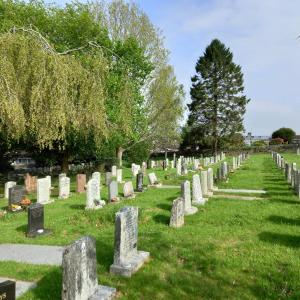
Maintaining a Peaceful Sanctuary
Tavistock Town Council recognises the growing awareness of the environmental costs of burial and cremation, and the rise in “green burials”. The Council also recognises that the benefits to biodiversity can come at the expense of the ornamental, cultural, and recreational value of cemeteries. Whilst changes to the way we manage the Cemetery has brought about enhancements to biodiversity, we acknowledge the need for a balance between management for wildlife, and the other important functions that cemeteries provide. The aim is to reach a good compromise that provides families with a peaceful sanctuary to care for their loved ones’ graves, whilst helping to protect our environment for the present and future generations.
The Town Council has adopted the IBCA Charter for the Bereaved, and is committed to improving the service offered to the bereaved in Tavistock.
For further information relating to cemeteries and the impact on the environment can be found on the Blue Campaign and Historic England websites listed below;
Historic England – Caring for Heritage Cemeteries and Burials
